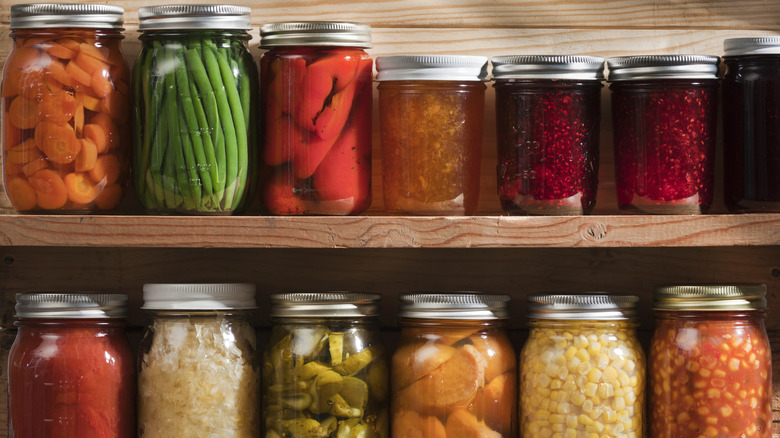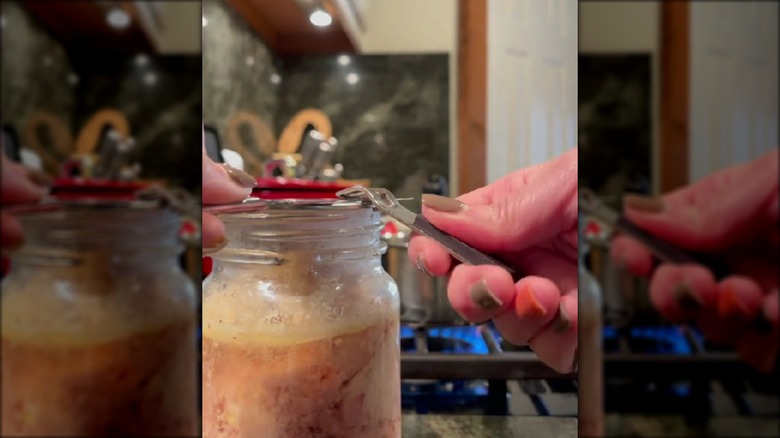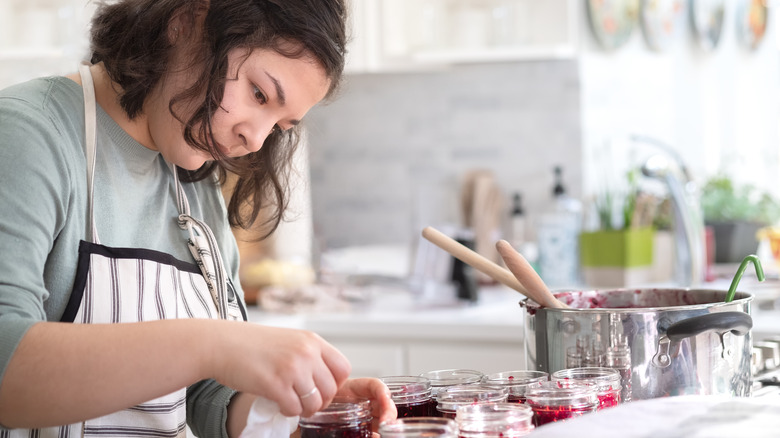Is It Safe To Eat Canned Raw Chicken?
While no one bats an eye at canning fruit and vegetables at home, canned chicken is another beast altogether. That's why so many people were positively flummoxed upon viewing a TikTok video showing a woman cooking with chicken that's been sitting on a shelf in her kitchen for two whole years. While the notion is admittedly startling, the truth is that canning raw chicken and other meat is safe, provided you take the right approach, as per Southern Living.
Many commenters on the video expressed concern, with one stating, "This is why you don't eat at other people's houses." Another said, "Logically, my brain knows the food is safe bc of the storing method; however, my brain is also 8,000% horrified." Among the many squeamish individuals were people familiar with canning, who were far more open to the experience of eating canned chicken. However, a number of people had another concern, namely the specific canning method used in the clip.
Water bath vs. pressure canning: which method is best?
The canning maven responsible for the TikTok clip states that she used a water bath method, which quite a few commenters found fault with. As stated by one person, "I was always taught rule #1 is never ever under any circumstances water bath any kind of meat. It can be deadly." While the original poster claims the water bath method for raw chicken has been in her family for generations, it's actually not recommended for certain foods.
South Dakota State University Extension provides some insight into when to use a water bath and when to use pressure canning. Apparently, it's all a matter of acidity, as water baths are best for highly acidic foods and recipes, such as canning tomatoes or making fruit butter or jam. On the other hand, pressure canning is recommended for low-acid foods including, you guessed it, poultry (as well as red meat, green beans, and seafood). Chicken's lack of acidity means it's more susceptible to bacterial growth, and only pressure canning can kill potential pathogens effectively. This recommendation is supported by the USDA, which states that only pressure canning is capable of reaching a temperature range between 240 to 250 degrees Fahrenheit, which is crucial for sterilizing foods with a low acid content.
Common canning issues and how to avoid them
Along with selecting the safest canning method for your chicken, you must also be aware of common canning problems. The National Center for Home Food Preservation highlights a few issues that occur and why they happen. If you find that the can's contents are a darker color at the top, the problem usually stems from exposure to air within the jar. Ensuring that the food is fully submerged in water or some other liquid prior to sealing can prevent this issue. Also, it's likely that the food is still good to eat in this case, as internal oxidation doesn't always equate with spoilage.
If the liquid in the can appears cloudy, tread lightly, as the food may be spoiled. In this case, there may have been an issue with your canning recipe that allowed air to get inside the jar after sealing. If you find that the seal is broken or that there are defects in the jar, the food should be discarded. In the future, only use lids in good condition and free from rust. Additionally, be sure to clean the rim of the jar before applying the lid, as food particles can sometimes negatively affect the seal.


